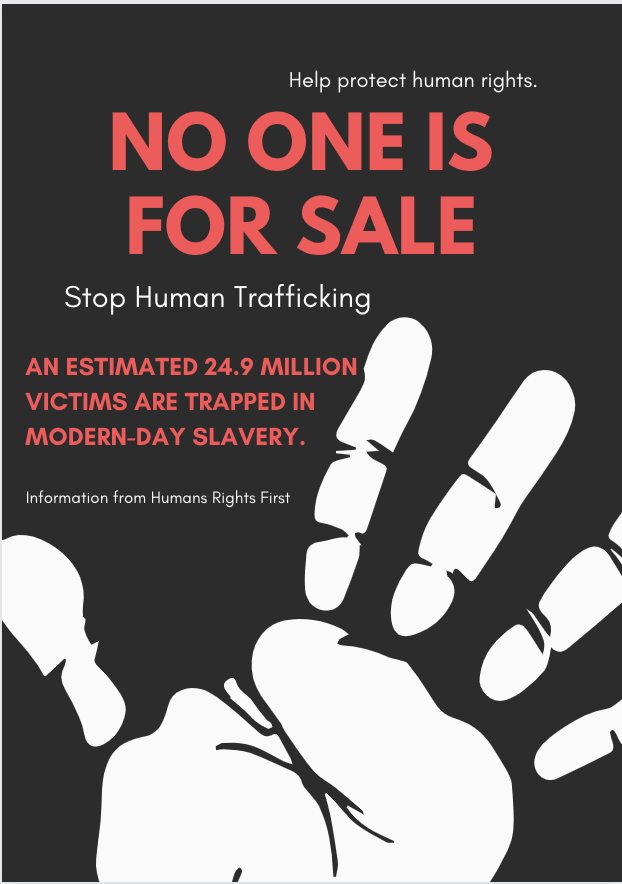In front of an audience of more than 50 college students, Carla Clanagan motioned to the crowd. “It can be anyone. Look around, anyone of you can be a trafficker; anyone of you can be a victim,” Clanagan, a front-line fighter to help rescued survivors heal, said.
There is more to human trafficking than the “kidnapping” stereotype that many people believe it to be.
Victims can be sold by family members, tricked into marriage or new employment contracts and groomed with false promises by someone they thought they trusted.
An estimated 24.9 million victims are trapped in modern-day slavery.
According to The United States Department of Justice (DOJ), human trafficking “is a crime that involves compelling or coercing a person to provide labor or services, or to engage in commercial sex acts. The coercion can be subtle or overt, physical or psychological. Exploitation of a minor for commercial sex is human trafficking, regardless of whether any form of force, fraud or coercion was used.”
The stereotypes and “movie versions” surrounding this depiction that we’ve come to know are more than girls being locked away in dark rooms who need to be rescued. Human trafficking is a real-life crime that preys on people that some of us may see every day.
There is no one profile of a trafficking victim or of a trafficker.
What the movies and stereotypes don’t show is that both victims and traffickers can be hidden “in plain sight, interact with people on a daily basis and are forced to work under extreme circumstances,” according to warnings listed on a DOJ webpage.
“The visual of the crossed hands tied with rope; get rid of that visual. That is not your typical trafficking victim,” Abbie Newman, Chief Executive Officer (CEO) of Mission Kids Child Advocacy Center, said.
Although there is no true typical trafficking victim, Clanagan said that the girls who may have a boyfriend that never comes around, typically dresses one way, likes to be around people and then makes a drastic shift to wearing designer clothes and staying home or taking many weekend trips could be “signs that something’s happening, even if its not sex trafficking something’s changed.”
She said we shouldn’t go looking for these changes but that we want to be alert and pay attention to differences in behavior.
Traffickers may also seamlessly blend into the lives of young adults. There is not one defining characteristic that every human trafficker has in common. Even the depiction that all traffickers are males is false.
Experts at the panel said that young teens can be hired by traffickers to scout their schools for potential victims.
According to the DOJ, “The United States has prosecuted cases against women traffickers. Traffickers can be pimps, gang members, diplomats, business owners, labor brokers and farm, factory and company owners.”
“I think across the board we just don’t want to put this in a nice little box and say this is what a trafficker looks like or this is what a victim looks like; it can be anyone, from any walk of life, of any race, anyone can be a victim or a trafficker,” Clanagan said.
So what do you do when any living person can be a victim right under your nose or you can be unknowingly someone who crosses paths with a trafficker on your morning walk around the community?
The first step is to throw away the past depictions, stereotypes and what we thought we knew about human trafficking.
By reeducating ourselves and those around as, we can do away with the movie versions of human trafficking.
We can then realize that anyone can be a trafficker, and we can better see the real faces of victims, who look like you and me.




